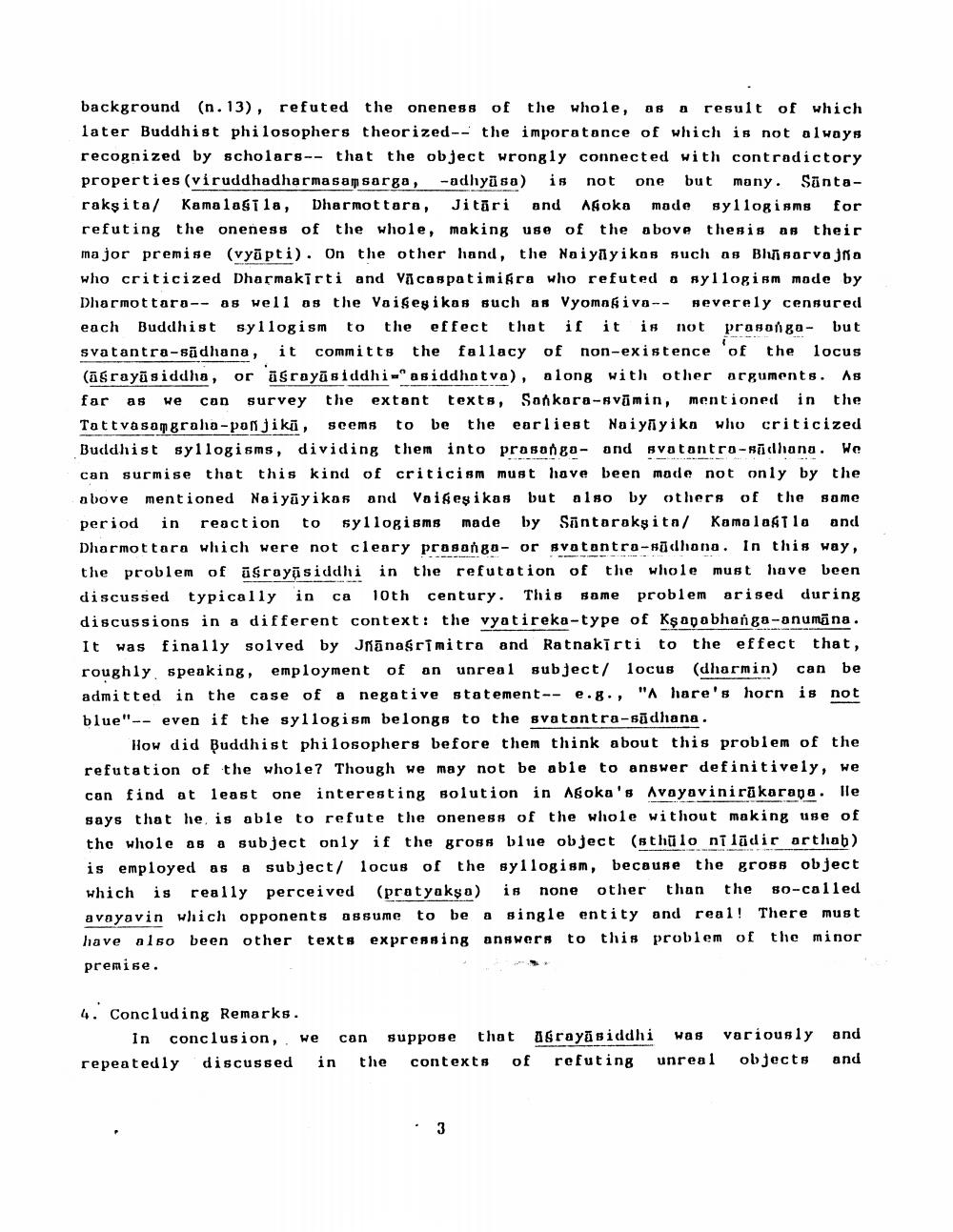Book Title: Bubun Tozentai Author(s): Toru Funayama Publisher: Toru Funayama View full book textPage 3
________________ background (n. 13), refuted the oneness of the whole, 86 a result of which later Buddhist philosophers theorized-- the imporatance of which is not always recognized by scholars-- that the object wrongly connected with contradictory properties (viruddhadharmasamsarga, -adhyasa) is not one but many. Santaraksita/ Kamalagila, Dharmottara, Jitāri and Agoka made syllogisms for refuting the oneness of the whole, making use of the above thesis as their major premise (vyapti). On the other hand, the Naiyayikas such as Bhōsarvaja who criticized Dharmakirti and Vacaspatimigra who refuted a syllogism made by Dharmottara-- as well as the Vaigesikas such as Vyomagiva -- severely censured each Buddhist syllogism to the effect that if it is not prasanga- but svatantra-sadhana, it committs the fallacy of non-existence of the locus (asrayāsiddha, or asrayāsiddhi-"asiddhatva), along with other arguments. As far as we can survey the extant texts, Sankara-svāmin, mentioned in the Tattvasangraha-panjika, seems to be the earliest Naiуnyika who criticized Buddhist syllogisms, dividing them into prasanga- and svatantra-sadhana. We can surmise that this kind of criticism must have been made not only by the above mentioned Naiyayikas and Vaigesikas but also by others of the same period in reaction to syllogisms made by Santarakṣita/ Kamalagila and Dharmottara which were not cleary prasanga- or svatantra-sadhana. In this way, the problem of gray@siddhi in the refutation of the whole must have been discussed typically in ca 10th century. This same problem arised during discussions in a different context: the vyatireka-type of Kṣapabhanga-anumāna. It was finally solved by Jnanasrimitra and Ratnakīrti to the effect that, roughly speaking, employment of an unreal subject/ locus (dharmin) can be admitted in the case of a negative statement-- e.g., "A hare's horn is not blue" even if the syllogism belongs to the sva tantra-sadhana. How did Buddhist philosophers before them think about this problem of the refutation of the whole? Though we may not be able to answer definitively, we can find at least one interesting solution in Agoka's Avayavinirākarapa. lle says that he is able to refute the oneness of the whole without making use of the whole as a subject only if the gross blue object (sthulo niladir arthab) is employed as a subject/ locus of the syllogism, because the gross object which is really perceived (pratyaksa) is none other than the so-called avayavin which opponents assume to be a single entity and real! There must have also been other texts expressing answers to this problem of the minor premise. 4. Concluding Remarks. In conclusion, we can suppose that grayāsiddhi was variously and repeatedly discussed in the contexts of refuting unreal objects and 3Page Navigation
1 2 3 4
